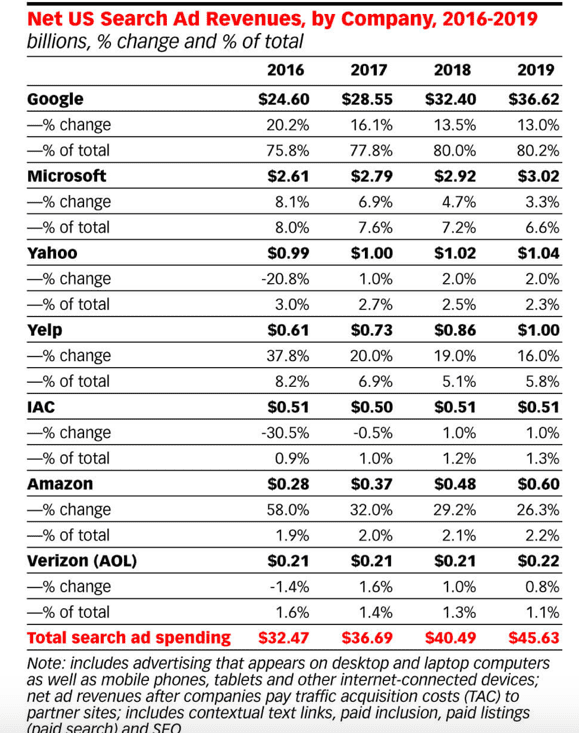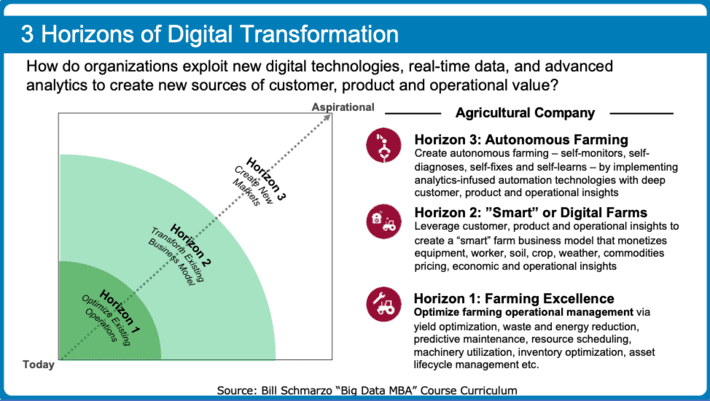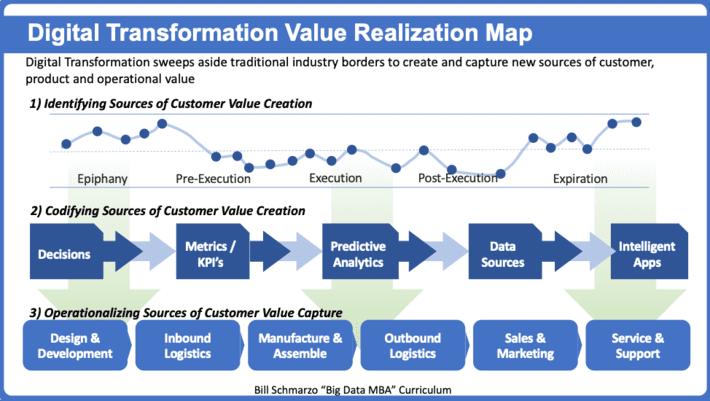In the early 2000’s, IBM Deep Blue was on the lookout for its next Grand Challenge. It had achieved an exhilarating win over chess grand master Garry Kasparov in 1997. But that was a game with deterministic outcomes where superior processing power gave Deep Blue a significant advantage over even a human grand champion. IBM needed a challenge commiserate with its Artificial Intelligence aspirations, and the wildly popular TV game show Jeopardy! offered just that challenge.
According to David Ferrucci, who headed up the IBM Deep Blue project, Deep Blue had to develop several AI innovations in order to compete against Jeopardy! world champions. Deep Blue, renamed Watson, had to parse, analyze, assess and interpret the Jeopardy question (which was often phrased in a humorous or wry way); query an metadata-enriched open domain of wide ranging information; identify, assess, and score candidate answers and then select the highest probability answer given the current status of the Jeopardy contest …all in about one second.
And in 2011, Watson defeated Jeopardy! champions Brad Rutter and Ken Jennings to win the $1 million grand prize. Ken Jennings, famous for winning 74 games in a row, borrowed a “Simpson’s quote “I, for one, welcome our new computer overlords” to acknowledge Watson’s great achievement.
At the same time that IBM was dominating the Jeopardy! world champions, the battle for internet search dominance was underway. In 2004, Google (35% market share) and Yahoo (32% market share) were the market leaders. Over the next decade, the web search battle quickly settled out with Google achieving a dominant 80+% market share position, and an even higher percentage of web search profits (see Figure 1).

Figure 1: “Google earns 78% of $36.7B US search ad revenues, soon to be 80%”
By 2019, Google was leading the Search Ad Revenues with revenues of $36.B and 80% market share…just in the US!
While the battle for internet search leadership was still undetermined in the 2000’s, it would appear that IBM Watson had a “better search mousetrap” in answering questions with the speed and accuracy that would take Google a decade to realize. But IBM Watson did not move on that opportunity. IBM Watson did not leverage their AI-leading technology to dominant a market that would eventually be $48B in size by 2019. Why?
What is Your Frame for Measuring Innovation?
“When you change the way you look at things, the things you look at change.” – Wayne Dyer
Maybe the most important determinant of company survival in this age of rapidly evolving customer, technology, society and environmental changes is the “frame of reference” (frame) through which a company views their business.
Google did not have a product install base to protect, so they could view the internet search market opportunity via a “customer solution” frame. Google was free of the existing product frame shackles of yesterday to innovate and create new sources of customer value for tomorrow. Google did not have to worry about protecting a mainframe and RDBMS businesses and battling the corporate white corpuscles that were determined to consume any spend and attention not focused on defending yesterday’s glory.
So how do organizations manage against the risk of missing the “next big thing” when their current business frame is focused on protecting yesterday’s glory (their install base business)?
Framing Innovation Through the 3 Horizons of Digital Transformation
New digital technologies are emitting new sources of data (more granular, low-latency, real-time) that when combined with advancements in artificial intelligence, machine learning and deep learning, are uncovering new sources of customer, product and operational value. These customer behavioral, product performance and operational efficiency insights can be used to optimize existing business processes for today’s market share battles.
But how do organizations exploit these customer behavioral, product performance and operational efficiency insights to gain an advantage to successfully move into new markets? How do these new sources of customer, product and operational value fuel the digital transformation mandate and enabling companies to re-engineer their business and operational model? Welcome to the “3 Horizons” management concept!
The goal of “3 Horizons” management concept is to enable organizations to manage a portfolio of projects that support both current and future market growth. The 3 Horizons concept helps organizations to prioritize projects and allocate investments with the goal of sustaining the current business while investing in future businesses.
The 3 Horizons are comprised of the following stages:
- Horizon 1 leverages operational data with advanced analytics to achieve operational excellence to win today’s market share battles.
- Horizon 2 exploits customer, product and operational insights gained in Horizon 1 with AI or Machine Learning-driven automation to create “smart” or digital entities (buildings, hospitals, factories, vehicles, oil fields, farms), where “smart” is defined as optimizing across the use cases that support an organization’s business or operational objectives.
- Horizon 3 creates autonomous entities or environments that continuously learn and evolve in order to self-monitor, self-diagnose, self-heal and self-improve against objective functions across a wide range of “value statements” (financial, operational, customer, environmental and societal) to maximize those values without human intervention.
Organizations need to embrace the Horizons approach in order to drive operational excellence within their existing businesses (Horizon 1) while re-engineering their business models to identify, codify and operationalize new sources of customer, product and operational value to create “smart” or digital entities in Horizon 2 and autonomous entities and environments to create new markets in Horizon 3 (see Figure 2).

Figure 2: 3 Horizons of Digital Transformation
To summarize the Agricultural Company example in Figure 2:
- Horizon 1: Farming Excellence. Optimize farming operational management via yield optimization, waste and energy reduction, predictive maintenance, resource scheduling, machinery utilization, inventory optimization, asset lifecycle management etc.
- Horizon 2: “Smart” or Digital Farms. Leverage customer, product and operational insights gained in Horizon 1 to create a “smart” farm business model that monetizes equipment, worker, soil, crop, weather, commodities pricing, economic and operational insights.
- Horizon 3: Autonomous Farming. Create autonomous farming – self-monitors, self-diagnoses, self-fixes and self-learns – by implementing analytics-infused automation technologies with deep customer, product and operational insights.
Embrace Customer Perspective to Navigate 3 Horizons
Organizations that hope to identify and exploit new business opportunities must “think differently” about identifying, quantifying and operationalizing the sources of customer value creation. The Digital Transformation Value Realization Map in Figure 3 provides a framework to help organizations more quickly spot, assess and act on new market opportunities.

Figure 3: Digital Transformation Value Realization Map
Figure 3 outlines the process to 1) map out the sources of value creation to 2) codify of those sources of customer value creation via advanced analytics (propensity models, behavioral scores, etc.) to 3) operationalize the sources of customer value to drive improved business and operation outcomes.
Two foundational concepts are mastering the 3 steps in Figure 2:
- The creation of customer journey maps (by customer segments) in order to understand the tasks, actions or decisions that the customer needs to make to achieve their objectives (finding vacation rentals, booking air travel, buying groceries, finding movie theaters).
- The mapping of the relative economics or value creation aspects of the tasks, actions or decisions that comprise the customer journey map.
But now that you understand the sources of customer value creation, and you know how to codify and operationalize those sources of value, how do you leverage those insights to move into or even create new markets?
3 Horizons of Digital Transformation Homework Assignment
No blog would be complete without some sort of homework assignment. Let’s see how well you can complete the 3 questions below, and then I’ll compare your answers to those that my University of San Francisco MBA students come up with. Game on!
- Horizon 1: Operational Excellence (Optimization): What are your organization’s most important use cases where the application of data and analytics can drive operational excellence (use case or decision optimization)? _________
_________________________________________________________________________
_________________________________________________________________________
_________________________________________________________________________
- Horizon 2: “Smart” or Digital Environment:What customer, product and operational insights from Horizon 1 can be leveraged to transform your Horizon 1 market into a “Smart” or digital entity or environment? _______________
_________________________________________________________________________
_________________________________________________________________________
_________________________________________________________________________
- Horizon 3: Autonomous Environment:Where can you exploit analytics-infused automation technologies and deep customer, product and operational insights to create Autonomous entities or environments that can self-monitor, self-diagnose and self-heal without human intervention? ______________________________________________________________
_________________________________________________________________________
_________________________________________________________________________
_________________________________________________________________________
Blog key points:
- IBM (Deep Blue) Watson’s defeating Jeopardy! world champions was a monumental AI achievement that exposed the power of AI to the common layperson.
- At the same time the IBM Watson team was creating Jeopardy! winning AI innovations, Google was consolidating market share in the highly-profit Search Marketing industry.
- Could IBM Watson have become a dominant player to Google in search with its superior ability to match search requests into highly relevant content?
- “When you change the way you look at things, the things you look at change.” – Wayne Dyer
- An organization’s current product-centric Horizon 1 frame hinders its ability to identify and monetize customer needs that can lead to Horizon 2 business model opportunities.
- What are the roles of data and analytics to facilitate the transition from Horizon 1 to Horizon 2?
- Use the customer journey map to identification, codification and operationalization new sources of customer value creation.
